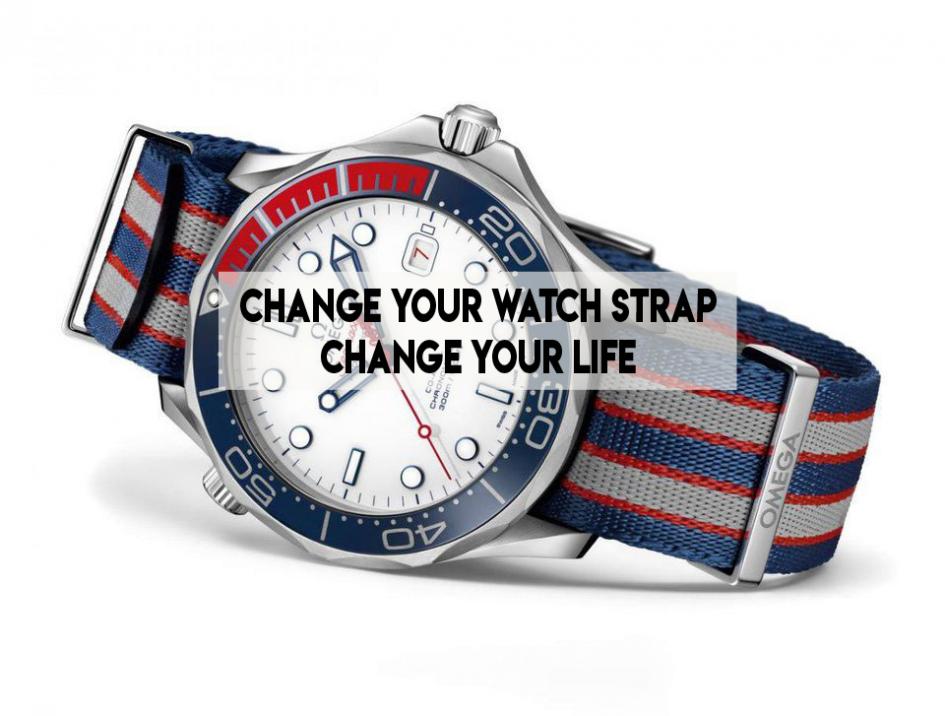

A metal strap design, and one that sometimes straddles the definitions of strap and bracelet, is the popular steel-mesh style, often called “Milanese.” Shown here is the Mido Commander Shade with a mesh bracelet
Alligator, lizard, python, crocodile, calf and more—and that’s just the leather options for your watch strap. Add to that, NATO and other fabric choices, or rubber and synthetic straps, as well as metal bracelets, and you’ll discover that the number of ways to affix you watch to your wrist is nearly limitless.
When it comes right down to it, there really is no other mostly aesthetic element that can make or break a timepiece as a contender for one’s wrist as the way it is attached to said wrist. And while the choice of strap or bracelet reflects personal taste (and the occasion), each also impacts a watch’s overall comfort and functionality.
Leather straps
Leather is always a good choice for a watch strap, and it can provide a dressy complement, a sporty look or even a very casual appearance as in the case of distressed leather and suede. Some leather straps are more heavily padded for sturdiness, comfort and style, while others—often seen on racing-type chronographs—are constructed in a “rally” style with well-placed perforations. Still others are lined with rubber to keep the leather pristine. Topstitching may match the leather or display a distinct contrast. Exotic leathers are interesting, like python or stingray, but alligator, crocodile and calf leather are most frequently the material of choice.

Omega’s Seamaster Diver 300M Commander’s Watch Limited Edition, shown here on a NATO strap, also comes with a stainless steel bracelet
Fabric straps
Military-inspired NATO straps are hot, usually paired with military-style timepieces. These mostly nylon, often-striped, one-piece straps are durable and secure—and washable. Other fabric straps include those made from denim, silk or satin, each conveying a more casual or dressed-up disposition depending upon the occasion.
Dive deep
Rubber straps, seen on diving-style sport watches, are sturdy, waterproof and lightweight—exactly what you’re looking for at 100 meters below the surface. Silicone and other synthetic straps offer similar properties, but don’t have the cachet of real rubber.

Mido celebrates its 100th anniversary with the Baroncelli Big Date, shown here with two-tone bracelet
Metal bracelets
Metal and ceramic bracelets that match the watchcase impact not only the look and weight of the watch, but also its price. Steel, titanium, various types of gold (red, yellow or white) or two-tone metal bracelets are always in good taste, and the design and finishing of the links, front and back, are tantamount to its comfort, as is the clasp used. PVD (Physical Vapor Deposition) coatings on steel bracelets are popular and are often used in black, gray or gold tones.
Another metal design, and one that sometimes straddles the definitions of strap and bracelet, is the popular steel-mesh style, often called “Milanese.” This finely knit metal dates to 19th century Milan, and its modern interpretation is used for all sorts of jewelry, including watch bracelets. The finer the mesh is woven, the greater the fluidity of the strap, lending a fabric-like quality that is both elegant and strong.
Switch it out
A strap or bracelet can transform the appearance of a watch in no time flat, and with many watch brands today offering easy-change options, it’s simple to swap out one for the other with little effort. What a great boon for timepiece aficionados, who may enjoy a multitude of looks for a minimum in cost.
Source: https://www.forbes.com/sites/nancyolson/2018/08/07/change-your-watch-str...